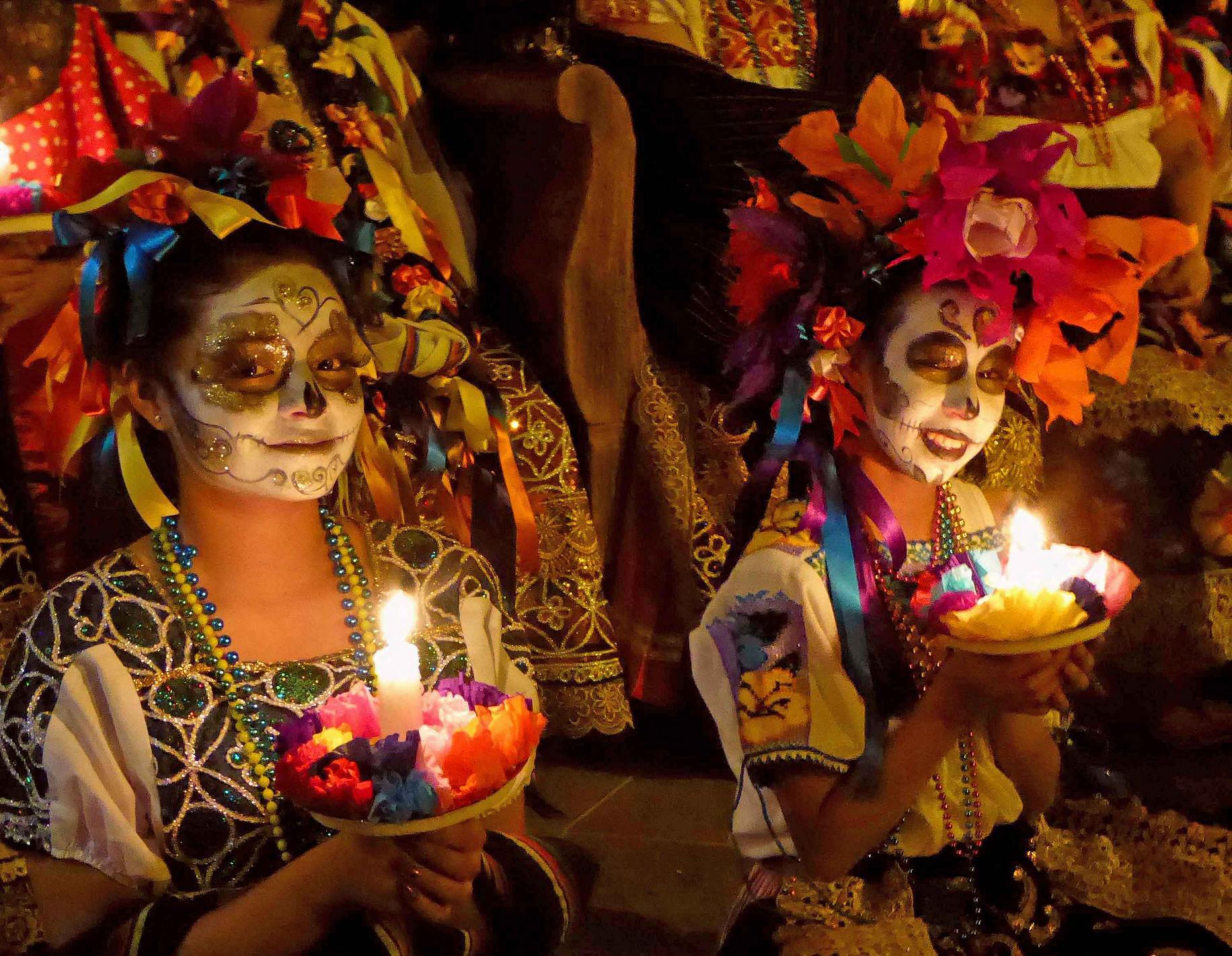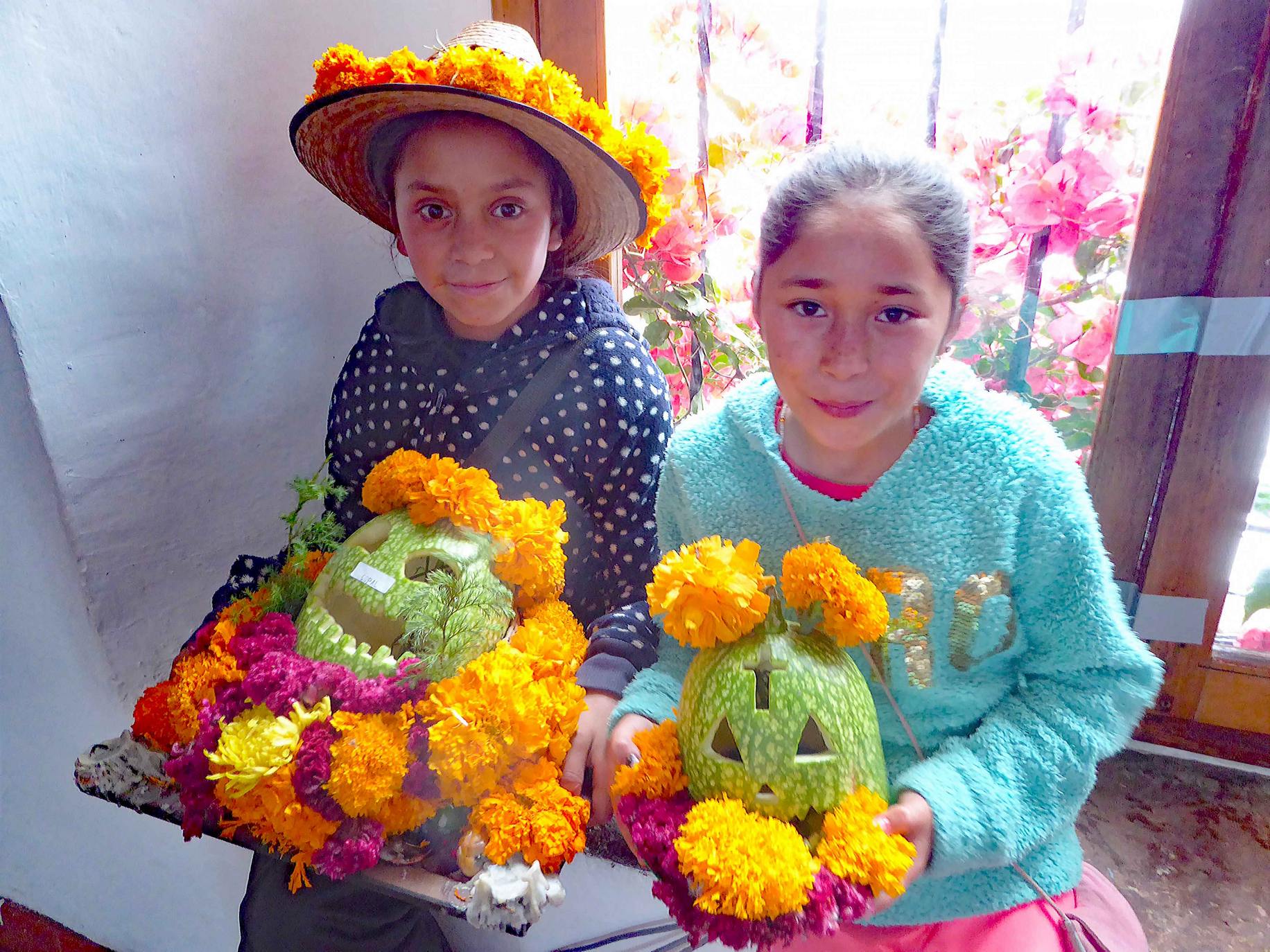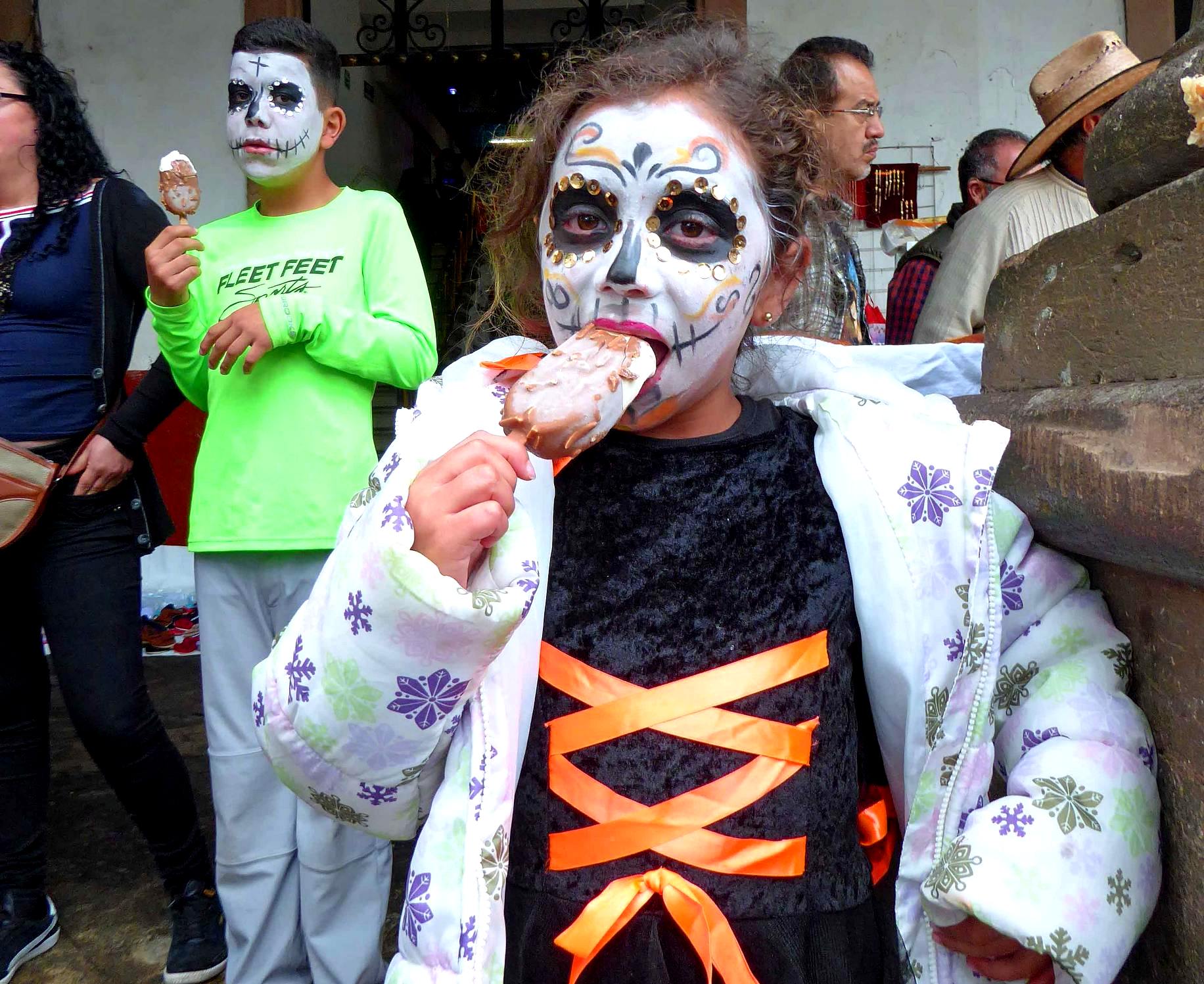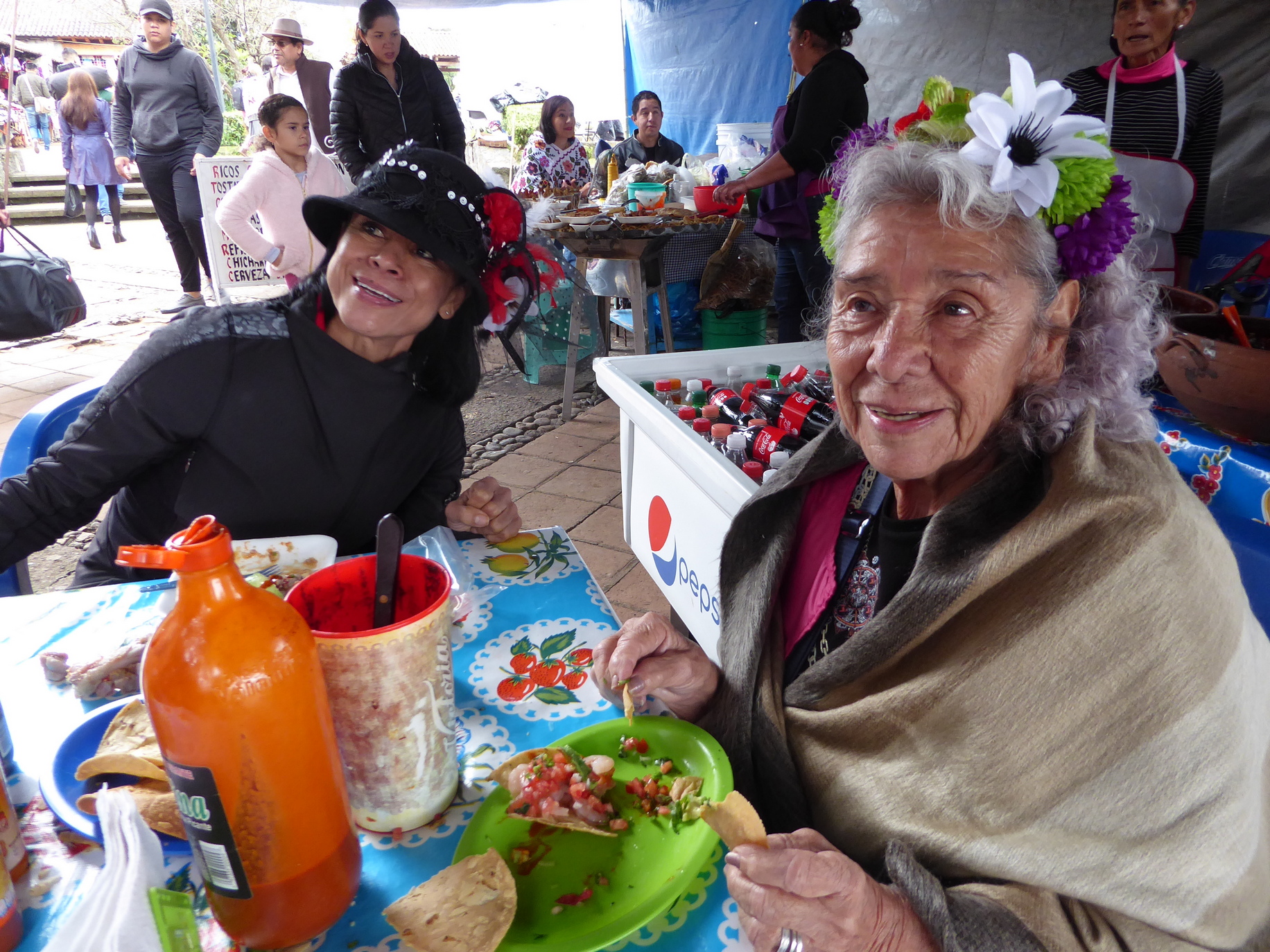
In this COVID year, every ‶normal″ celebration seems a little strange, even abnormal. Yet there is something comforting, even reassuring, about marking our festivals. To forget them is to lose continuity with our past. This year, we’ll again seek out marigolds to honor family members who are no longer with us. And we’ll make a dinner with mole amarillo, the saffron-scented marigold-colored sauce popular in this season in many parts of Mexico.
We will also remember the faces of Pátzcuaro, the colonial city of 80,000 in the Mexican state of Michoacán. Thanks partly to Disney’s Coco and partly to glossy travel stories, Pátzcuaro has become almost too famous for its Day of the Dead celebrations. We visited expecting a somber scene of memorializing the dead and pondering the thin line between this world and the next.
Yes, people decorated the graveyards with marigolds and set out plates for their hungry spirits. But visiting with the dead was also clearly a reminder to live while you can and take pleasure in the company of family and friends. Pátzcuaro’s main square was filled with a huge arts and crafts market while open-air restaurants squatted around the edges. Under the arcades of the handsome colonial buildings, musicians serenaded diners enjoying plates of enchiladas and steak a la plancha. Stalls were piled high with elaborately decorated sugar skulls that attracted bees and little children in equal measure. Women of all ages sat patiently to have their faces painted as Catrinas, the most famous of José Guadalupe Posada’s satirical skeletal figures.
Here are some of the faces of Pátzcuaro.








